Detroit Preserves Art Deco
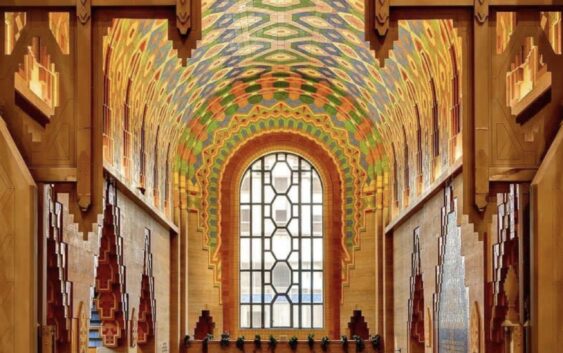
THE GUARDIAN BUILDING, DETROIT
Detroit Preserves Art Deco
The Roaring Twenties were the backdrop for the renowned architect Wirt C. Rowland to create a building like no other. In the 1920s, the city of Detroit was a worldwide industrial and commercial hub, and the city grew with unprecedented prosperity. It was in this era that a newly organized banking group – the Union Trust Company – was anxious to communicate their public image through their flagship headquarters and new offices.
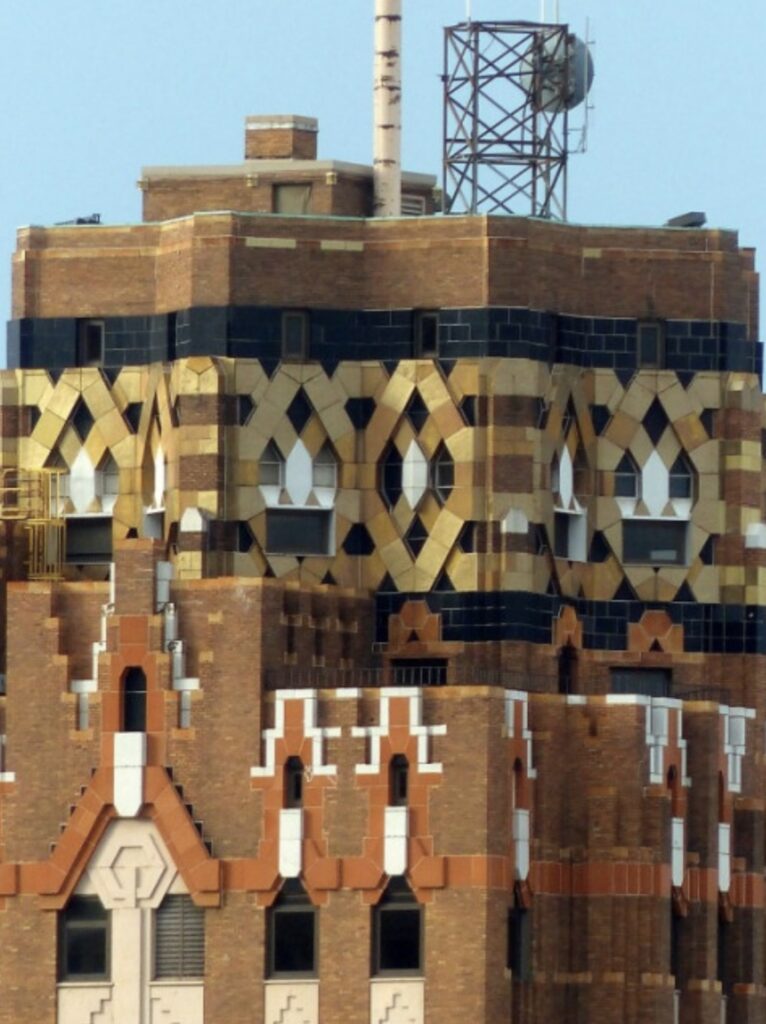
The Union Trust Company commissioned the architectural firm of Smith Hinchman and Grylls to design their headquarters, and they turned the task over to head designer Wirt C. Rowland. While working for Smith Hinchman & Grylls, Wirt Rowland played a key role in the design of many prominent Detroit buildings, including the Buhl Building, Jefferson Avenue Presbyterian Church, and the Penobscot Building expansion. His most brilliant contribution to Detroit’s skyline is the Union Trust Building.
With the design for the Union Trust Building completed in March 1927, a full city block was cleared to make way for the 40-story skyscraper. The building was completed in early 1929 – the year of the Stock Market Crash. The Union Trust Company fell victim to the crash, but was saved by investors who believed in the future of Detroit and was reorganized into the Union Guardian Trust Company. The building became known as the Union Guardian Building and today is known as the Guardian Building.
The Guardian Building is one of the most significant and striking Art Deco skyscrapers in the world. The building’s taller north tower and smaller octagonal south tower are connected with a nave-like block similar to the plan of a cathedral. In fact, the Guardian Building was once promoted as “the Cathedral of Finance.” Its grandeur was, and still is, unconventional. Visitors are awestruck by the explosion of color, craftsmanship and blending of Native American, Aztec, and Arts & Crafts influences.
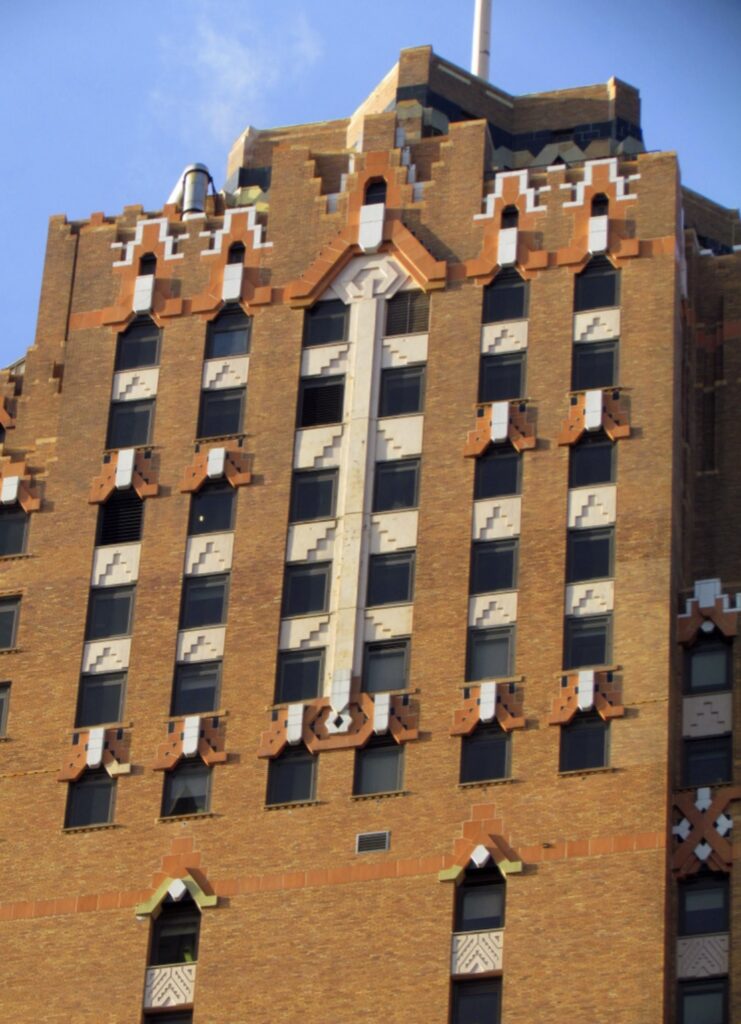
The exterior of the Guardian Building is faced with stunning tangerine colored bricks resting on a granite base. The brick’s custom color was later marketed by the manufacturer as “Guardian Brick.” Polychromed terra cotta on the upper stories was purposefully over-scaled to be seen by motorists on the street below. Wirt Rowland explained, “We no longer live in a leisurely age…the impression must be immediate, strong and complete. Color has this vital power.”
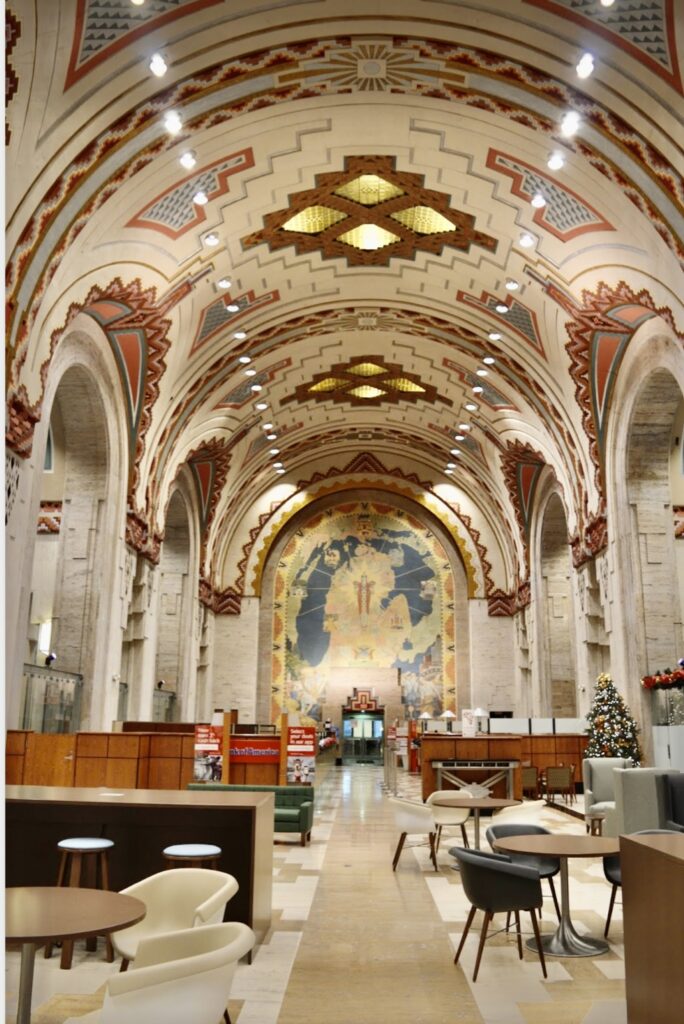
Designed by Michigan architects, erected by Michigan contractors, and built by Michigan artisans: the Guardian Building is virtually a temple of Michigan commerce and ingenuity. The Griswold Street entrance is crowned with a semi-dome lined with symbolic custom tiles by Mary Chase Stratton’s Pewabic Pottery of Detroit. Michigan artist Ezra Winter designed the large glass mosaic featured in the main lobby as well as the spectacular mural in the original banking hall. Flanking the sides of the main entrance are reliefs designed by Detroit’s own architectural sculptor, Corrado Parducci. In all, 40 artisans worked on the structure’s painted murals and ceilings, intricate tile work, mosaic and stained glass, marble fixtures, and vaulted lobby.
The lavish use of elegant and timeless materials is plentiful throughout the building. Italian Travertine marble is used for steps and wall surfaces, contrasting with the deep red Numidian marble imported from Africa. Brilliantly colored Rookwood tiles fill the lobby’s vaulted ceiling. Monel metal was used in the large ornamental screen dividing the banking hall and main lobby. Even the office corridors and restrooms are lined in a Tavernelle marble from Tennessee.
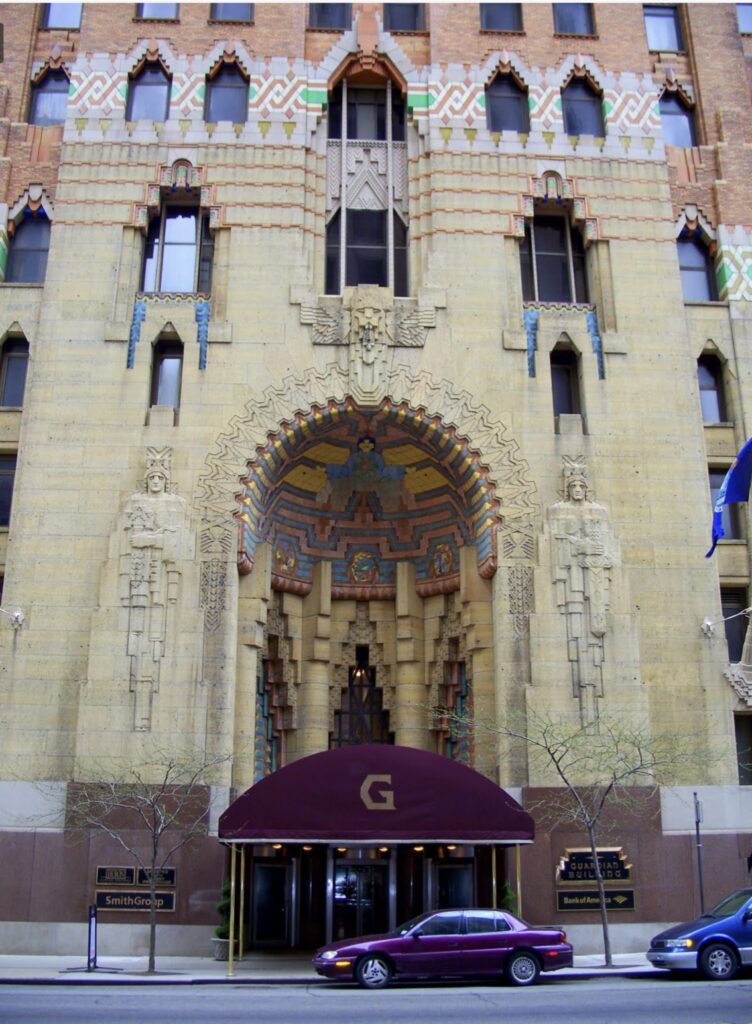
The Guardian Building is a timeless depiction of creativity and accomplishment. It represents a past era enriched by people who believed in the success of Detroit and its many cultures. The building has been designated a National Historic Landmark, the highest honor given by the National Park Service.
Today, under new ownership and management, the Guardian Building encourages commerce in a new era. Its strong foundation can once again provide a prestigious address for commerce and opportunity. The Guardian Building was designed for the future and shall long represent a spirit of innovation and commitment to success.















